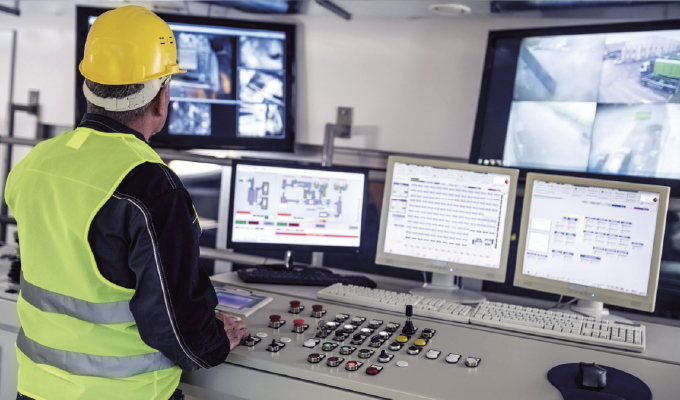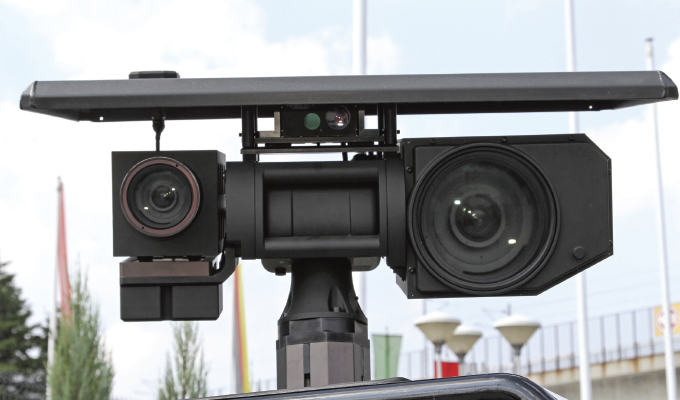In the rapidly evolving landscape of construction and public works, two pivotal trends have emerged as game changers: advanced surveillance technologies and data-driven decision-making. The integration of surveillance technology with operational data from work trucks presents a compelling opportunity to enhance operational efficiency, security, and safety in logistics, fleet management, and broader transport-related applications.
There are several ways in which surveillance technology can leverage the rich data from work trucks to transform strategic decision making optimize business operations and security and foster business growth. For example, cameras, equipped with capabilities like high-definition video, motion detection, advanced analytics, and automatic alerts, serve as vital tools for monitoring and securing various environments.
While today’s work trucks are equipped with a variety of sensors and tracking systems that capture route efficiency data, fuel consumption and maintenance needs, the integration of surveillance technologies with operational data from work trucks presents a multitude of benefits.
Surveillance cameras can be used to monitor vehicle loading and unloading, ensuring that goods are handled correctly and efficiently. Additionally, in-cab cameras can help assess driver behavior and ensure compliance with safety standards. By combining video data with analytics from operational data, companies can gain comprehensive insights into their fleet operations.
REAL-TIME MONITORING
Surveillance technology can provide real-time video feeds that, when combined with GPS and telematics data from work trucks, offer comprehensive monitoring capabilities. Fleet managers can watch live footage of trucks on the road from a camera station, assess traffic conditions, and monitor driver behavior in real-time. This integration facilitates immediate responses to any issues that may arise, such as rerouting trucks away from accidents or congestion, and ensuring drivers adhere to safe driving practices. These analytics and data can even be provided to customers giving value-add insights such as real-time updates on when vehicles are deployed.
IMPROVED SECURITY
By integrating surveillance technology with data from work trucks, companies can significantly enhance security measures. For instance, cameras equipped within and around the vehicle can monitor and record all activities, which can be cross-referenced with data such as location and vehicle status provided by telematics. This allows for immediate action if a truck deviates from its planned route or if unauthorized access occurs, helping to prevent theft of the vehicle or its cargo.
Pairing cameras with a complete in-vehicle solution can provide even more additional intelligence and capabilities, such as triggering cameras and other devices or equipment when certain inputs such as physical switches or buttons are activated.
ADVANCED ANALYTICAL INSIGHTS
Surveillance cameras, especially those equipped with advanced analytics capabilities, can generate data that, when combined with operational data from trucks, provides deep insights into fleet operations. Analyzing video data for traffic patterns, stop durations, and loading times can help optimize routes and schedules. Furthermore, video analytics can identify patterns that may indicate inefficient operations or potential security risks.
COMPLIANCE AND DOCUMENTATION
Surveillance technology can help ensure compliance with regulatory requirements, such as hours of service regulations for drivers. Cameras can monitor driver behavior and working hours, providing an audit trail that can be useful for regulatory reporting and compliance checks. This data can also be crucial in the event of incidents, providing evidence that can help in investigations and insurance claims.

PERFORMANCE EVALUATION
Video surveillance can be used to monitor driver performance and behavior, providing a basis for targeted training programs. Reviewing footage of driving habits, combined with telematics data such as speed, braking, and acceleration, can help identify areas where drivers may need additional training to improve safety and efficiency.
SECURITY SYSTEMS INTEGRATION
Operational data from work trucks can be integrated with broader security systems that include other forms of surveillance technology, such as fixed cameras at warehouses, distribution centers, and offices. This creates a unified security posture that can track and monitor assets across multiple touchpoints in the supply chain, enhancing overall security and operational visibility.
PROACTIVE MAINTENANCE
Surveillance systems can be configured to monitor the mechanical state of the vehicle. For example, thermal cameras can be used to detect visible signs of wear or damage that may not be captured by standard vehicle diagnostics or visible light cameras. When combined with telematics data indicating potential issues (like repeated hard braking), this can inform proactive maintenance schedules that prevent breakdowns and enhance safety.
CLOUD CAPABILITIES
The trend of integrating cloud technology into work truck and transportation surveillance strategies is on the rise. Today’s usage of cloud platforms varies, but fundamentally, an open cloud-based platform offers businesses and public works more cyber-secure, flexible, and scalable security solutions. Cloud-based platforms facilitate the seamless integration of surveillance devices and partner applications through a range of managed services. To maintain systems at their peak performance and ensure robust cybersecurity, companies specializing in surveillance solutions take on greater responsibility by hosting, delivering, and managing digital services to guarantee system availability and reliability.
These managed services provide secure remote access and monitoring of live video feeds, alarm activations, and enhance device management through automatic updates across the device lifecycle. Additionally, they offer robust user and access management features that allow for easy and secure control over user access rights and permissions.
By leveraging operational data from work trucks in conjunction with advanced surveillance technologies, businesses can achieve a holistic view of their fleet operations. This integration not only enhances security and operational efficiency but also drives significant improvements in safety and compliance, providing a substantial return on investment. As technology continues to evolve, the potential for these integrated systems to transform fleet management and logistics will only increase, paving the way for more sophisticated, data-driven decision-making processes.
FOR MORE INFORMATION
Jason Chiu is the professional services group manager with Axis Canada. He has a background in IT and networking and has spent over 15 years in the security industry, from being an integrator, consultant and manufacturer. Jason is an ASIS board Certified Protection Professional, and Physical Security Professional. Trained in Critical Infrastructure Protection, and Crime Prevention Through Environmental Design, and ISC2 Certified in Cybersecurity.




